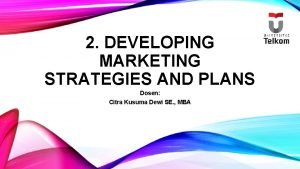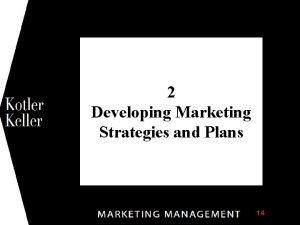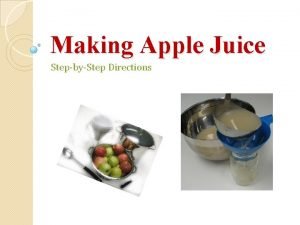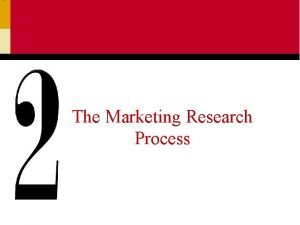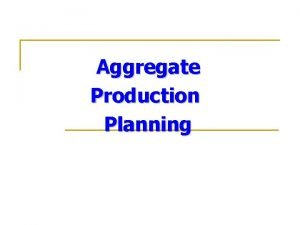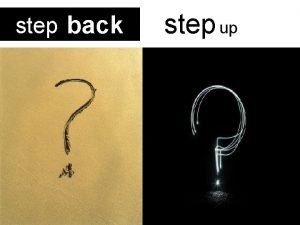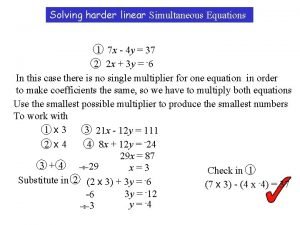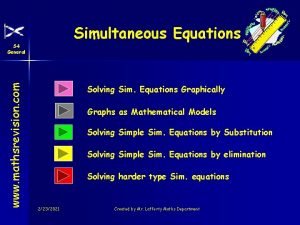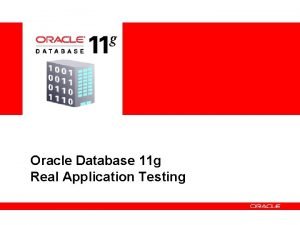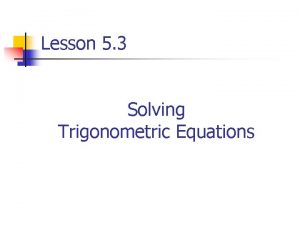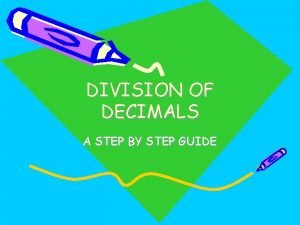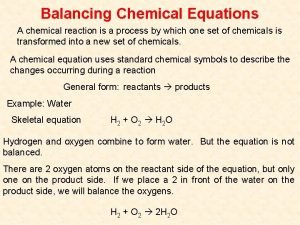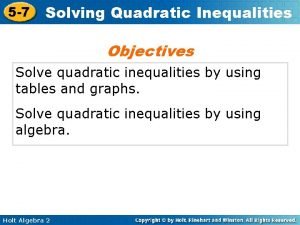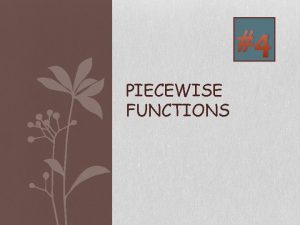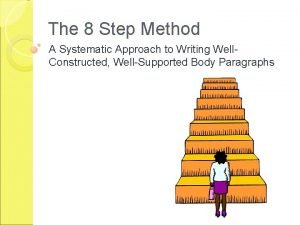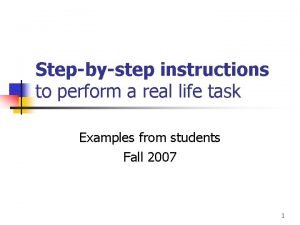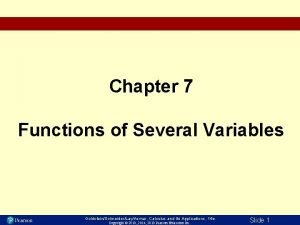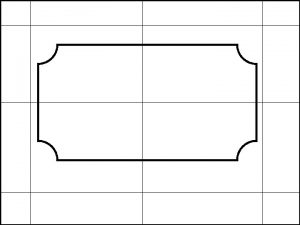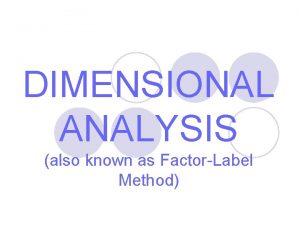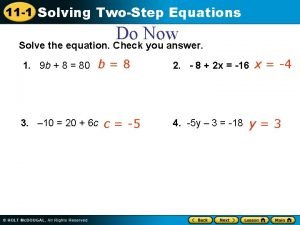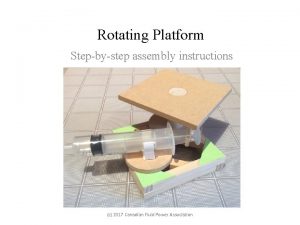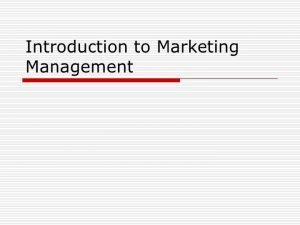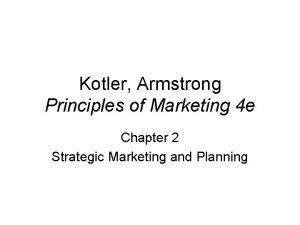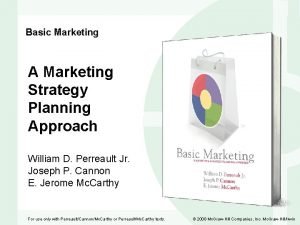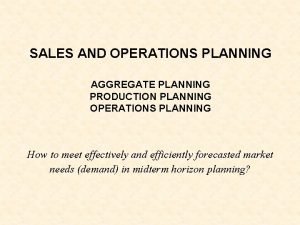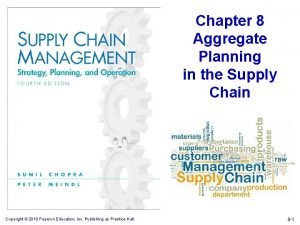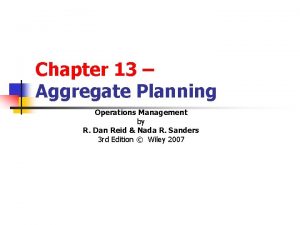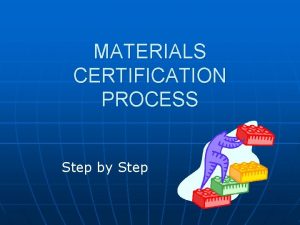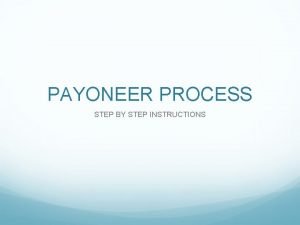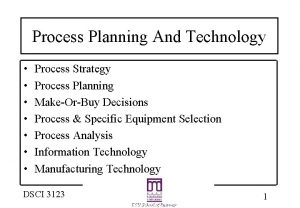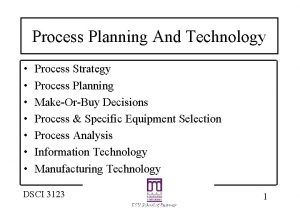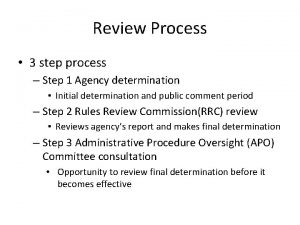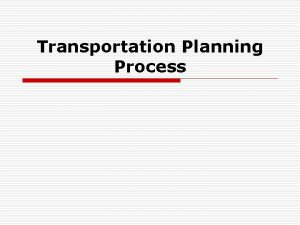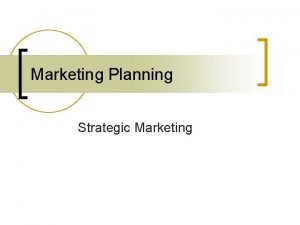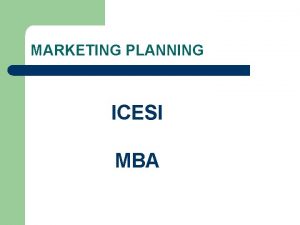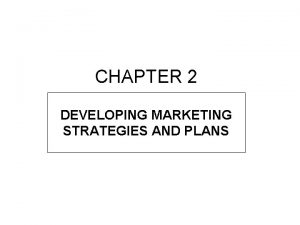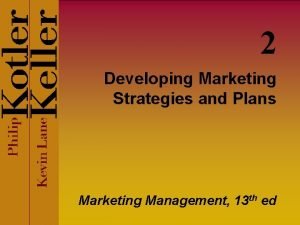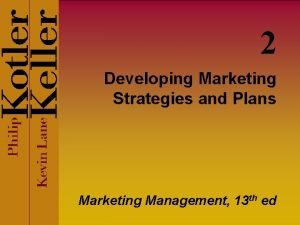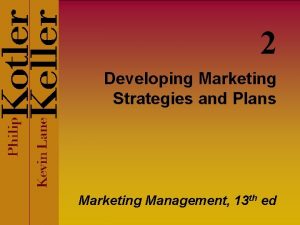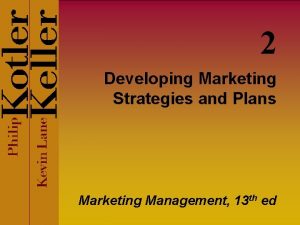Marketing Plans and strategies Marketing Planning Process Step









































































































- Slides: 105




























Marketing Plans and strategies

Marketing Planning Process Step 1: Situation Analysis Adjust Marketing Plan as Necessary Step 2: SWOT Analysis Step 7: Perform Review Step 3: Strategic Market Plan Step 4: Marketing Mix Strategy Step 6: Profit Plan Step 5: Marketing Budget

Components of a Market Strategy

Successful Plan Implementation Owning the Marketing Plan 1. Detailed Action Plans 2. Champion and Ownership Team 3. Compensation 4. Management Involvement Supporting the Marketing Plan Adapting the Marketing Plan 1. Time to Succeed 1. Continuous Improvement 2. Resource Allocation 3. Communication 4. Required Skills 2. Feedback Measures 3. Persistence 4. Adaptive Rollout

A Hierarchy of Performance Strategic Performance Marketing Performance Program A Performance Task 1 Performance Financial Performance Program B Performance Task 2 Performance Program C Performance Task 3 Performance

Marketing Performance is the End Product of Marketing Plans and Marketing Actions Marketing Plans Marketing Actions Marketing Performance

Marketing Plans Marketing Actions Poor Data Analysis and Planning Marketing Performance Poor Communication of Objectives Insufficient Resource Allocation Changes in Customer Needs Poor Tracking of Performance Insufficient Training

MARKETING PLANS APPROPRIATE I M P L E M E N T A T I O N SUCCESS GOOD POOR • All that can be done to insure success has been done INAPPROPRIATE UNCERTAIN • Good execution can mitigate poor strategy, forcing success. OR The same good execution can hasten failure TROUBLE UNCERTAIN • Poor execution hampers good strategy. Mgmt may never become aware of strategic soundness because of implementation inadequacies • Very Difficult to diagnose because bad strategy is masked by poor execution. • Difficult to fix because both strategy and execution are wrong.

Performance Relationships Program Effectiveness Sales/Share Increases New Service Performance Profitability Customer Satisfaction Efficiency

Defining Marketing Effectiveness �The Achievement of Marketing Program Goals �Sales growth/share growth �Retention �Profitability �Awareness �Positioning �Cost reduction

Performance Dimensions - Growth �Sales growth �Share growth �Increased sales to existing customers �Sales to new customers �Opening new markets

Performance Dimensions - Efficiency �Achieving goals with minimum resource invested. �Productivity �Outputs/Inputs Efficiency = Sales. Mktg Exp.

Performance Dimensions - New Products Development �Trial rate �Retention rate �Time to market �Revenue from new services

Performance Dimensions Customer Satisfaction �Retention/Loyalty �Perceived value received

Performance Dimensions Profitability �ROA = Profits/Assets �Cash Flow/Assets = CFROA �Return on Sales (ROS) = Profits/Sales �Meeting Margin or Contribution Goals

Conclusions: �Evaluation of program effectiveness depends on the objectives set for the program. �While profitability is one dimension, success will be determined by those variables which drive profitability. �Many of these variables are marketing performance indicators.

Common Firm Goal Attainment Metrics �Awareness rates. �Satisfaction and Loyalty Ratings �Growth and Share targets. �Hurdle rates for Project ROI �NPV hurdles.

CREATING LONGTERM LOYALTY RELATIONSHIP

What is Customer Perceived Value? Customer perceived value is the difference between the prospective customer’s evaluation of all the benefits and all the costs of an offering and the perceived alternatives.

Determinants of Customer Perceived Value Total customer benefit Total customer cost Product benefit Monetary cost Services benefit Time cost Personal benefit Energy cost Image benefit Psychological cost

Steps in a Customer Value Analysis �Identify major attributes and benefits that customers value �Assess the qualitative importance of different attributes and benefits �Assess the company’s and competitor’s performances on the different customer values against rated importance �Examine ratings of specific segments �Monitor customer values over time

What is Loyalty? Loyalty is a deeply held commitment to re-buy or repatronize a preferred product or service in the future despite situational influences and marketing efforts having the potential to cause switching behavior.

Top Brands in Customer Loyalty �Avis �Google �L. L. Bean �Samsung (mobile phones) �Yahoo! �Canon (office copiers) �Land’s End �Coors �Hyatt �Marriott �Verizon �Key. Span Energy �Miller Genuine Draft �Amazon

Measuring Satisfaction �Periodic surveys �Customer loss rate �Mystery shoppers �Monitor competitive performance

What is Quality? Quality is the totality of features and characteristics of a product or service that bear on its ability to satisfy stated or implied needs.

Maximizing Customer Lifetime Value �Customer profitability �Customer equity �Lifetime value

Estimating Lifetime Value �Annual customer revenue: $500 �Average number of loyal years: 20 �Company profit margin: 10 �Customer lifetime value: $1000

What is Customer Relationship Management? CRM is the process of carefully managing detailed information about individual customers and all customer touchpoints to maximize customer loyalty.

Framework for CRM �Identify prospects and customers �Differentiate customers by needs and value to company �Interact to improve knowledge �Customize for each customer

CRM Strategies �Reduce the rate of defection �Increase longevity �Enhance share of wallet �Terminate low-profit customers �Focus more effort on high-profit customers

Customer Retention �Acquisition of customers can cost 5 times more than retaining current customers. �The average customer loses 10% of its customers each year. �A 5% reduction to the customer defection rate can increase profits by 25% to 85%. �The customer profit rate increases over the life of a retained customer.

Steps for Creating Customer Evangelists �Customer plus-delta �Napsterize your knowledge �Build the buzz �Create community �Make bite-size chunks �Create a cause

Database Key Concepts �Customer database �Business database �Data warehouse marketing �Data mining �Mailing list

Using the Database �To identify prospects �To target offers �To deepen loyalty �To reactivate customers �To avoid mistakes

3. Product Life Cycles (PLC) �The course of a product’s sale and profit over it lifetime. It involves five distinct stages: product development, introduction, growth, maturity, and decline.

Sales & profits ($) Sales & Profit Life Cycles Introduction Growth Maturity Time Decline

Introduction stage �The product life-cycle stage in which the new product is first distributed and made available for purchase.

Sales & profits ($) Sales & Profit Life Cycles Introduction Growth Maturity Time Decline

Four Introductory Marketing Strategies High Promotion Low High Rapidskimming strategy Slowskimming strategy Low Rapidpenetration strategy Slowpenetration strategy Price

Growth stage �The product life-cycle stage in which a product’s sales start climbing quickly.

Maturity stage �The stage in the product life cycle in which sales growth slows or levels off. �Modify the market, the product, and the marketing mix.

Decline Stage �The product life cycle stage in which a product’s sales decline

ANALYZING COMPETITORS

Definition �Competitive Advantage �An advantage over competitors gained by offering consumers greater value than competitors offer.

Definition �Competitive Analysis �The process of identifying key competitors; assessing their objectives, strategies, strengths and weaknesses, and reaction patterns; and selecting which competitors to attack or avoid.

Steps in Analyzing Competitors

Competitor Analysis Steps in the Process: Identifying Competitors Assessing Competitors Selecting Competitors to Attack or Avoid �Firms face a wide range of competition �Be careful to avoid “competitor myopia” �Methods of identifying competitors: �Industry point-of-view �Market point-of-view � Competitor can help maps

Competitor Analysis Steps in the Process: Identifying Competitors Assessing Competitors Selecting Competitors to Attack or Avoid �Determining competitors’ objectives �Identifying competitors’ strategies � Strategic groups �Assessing competitors’ strengths and weaknesses � Benchmarking �Estimating competitors’ reactions

Competitor Analysis Steps in the Process: �Strong or weak competitors Identifying Competitors Assessing Competitors Selecting Competitors to Attack or Avoid � Most companies compete � Customer value analysis �Close or distant competitors against close competitors �“Good” or “Bad” competitors � The existence of competitors offers several strategic benefits

Competitive Strategies �Basic Winning Competitive Strategies: Porter �Overall cost leadership Lowest production and distribution costs �Differentiation � Creating a highly differentiated product line and marketing program �Focus � Effort is focused on serving a few market segments �

Competitive Strategies �Basic Competitive Strategies: Value Disciplines �Operational excellence � Superior value via price and convenience �Customer intimacy � Superior value by means of building strong relationships with buyers and satisfying needs �Product leadership � Superior value via product innovation

Competitive Strategy Competitive Positions Market Leader Market Challenger Market Follower Market Nicher �Expanding the total demand � Finding new users � Discovering and promoting new product uses � Encouraging greater product usage �Protecting market share � Many considerations � Continuous innovation �Expanding market share � Profitability rises with market share

Balancing Customer and Competitor Orientations �Companies can become so competitor centered that they lose their customer focus. �Types of companies: �Competitor-centered companies �Customer-centered companies �Market-centered companies


Threat of New Entry �the existence of barriers to entry �economies of product differences �brand equity �switching costs �capital requirements �access to distribution �absolute cost advantages �learning curve advantages �expected retaliation �government policies

Competitive Rivalry �number of competitors �rate of industry growth �intermittent industry overcapacity �exit barriers �diversity of competitors �informational complexity and asymmetry �brand equity �fixed cost allocation per value added �level of advertising expense

Supplier Power �supplier switching costs relative to firm switching costs �degree of differentiation of inputs �presence of substitute inputs �supplier concentration to firm concentration ratio �threat of forward integration by suppliers relative to the threat of backward integration by firms �cost of inputs relative to selling price of the product

Buyer Power �buyer concentration to firm concentration ratio �bargaining leverage �buyer volume �buyer switching costs relative to firm switching costs �buyer information availability �ability to backward integrate �availability of existing substitute products �buyer price sensitivity �price of total purchase

Threat of Substitution �buyer propensity to substitute �relative price performance of substitutes �buyer switching costs �perceived level of product differentiation

Conducting Marketing. Research

What is Marketing Research? Marketing research is the systematic design, collection, analysis, and reporting of data and findings relevant to a specific marketing situation facing the company.

The Marketing Research Process Define the problem Develop research plan Collect information Analyze information Present findings Make decision

Step 1: Define the Problem �Define the problem �Specify decision alternatives �State research objectives

Step 2: Develop the Research Plan Data Sources Research Approach Research Instruments Sampling Plan Contact Methods

Research Approaches Observation Ethnographic Focus Group Survey Behavioral Data Experimentation

Qualitative Measures Word Association Projective Techniques Visualization Brand Personification Laddering

Technological Devices Galvanometers Tachistoscope Eye cameras GPS Audiometers

Sampling Plan � Sampling unit: Who is to be surveyed? � Sample size: How many people should be surveyed? � Sampling procedure: How should the respondents be chosen?

Types of Samples Probability Samples �Simple random �Stratified random �Cluster Nonprobability Samples �Convenience �Judgment �Quota

Contact Methods Telephone Interview Personal Interview Mail Questionnaire Online Interview

Pros and Cons of Online Research Advantages �Inexpensive �Fast �Accuracy of data, even for sensitive questions �Versatility Disadvantages �Small samples �Skewed samples �Technological problems �Inconsistencies

Barriers Limiting the Use of Marketing Research �A narrow conception of the research �Uneven caliber of researchers �Poor framing of the problem �Late and occasionally erroneous findings �Personality and presentational differences

Characteristics of Good Marketing Research ü Scientific method ü Research creativity ü Multiple methods ü Interdependence ü Value and cost of information ü Healthy skepticism ü Ethical marketing

What is Marketing-Mix Modeling? Marketing-mix models analyze data from a variety of sources, such as retailer scanner data, company shipment data, pricing, media, and promotion spending data, to understand more precisely the effects of specific marketing activities.

Figure 4. 2 Marketing Measurement Pathways

The Measures of Market Demand Potential Market Available Market Target Market Penetrated Market

Vocabulary for Demand Measurement �Market demand �Market forecast �Market potential �Company demand �Company sales forecast �Company sales potential

Estimating Future Demand �Survey of Buyers’ Intentions �Composite of Sales Force Opinions �Expert Opinion �Past-Sales Analysis �Market-Test Method
 Step 1 step 2 step 3 step 4
Step 1 step 2 step 3 step 4 Developing marketing strategies and plans chapter 2
Developing marketing strategies and plans chapter 2 Developing marketing strategies and plans
Developing marketing strategies and plans Ilumination
Ilumination The process of photosynthesis step by step
The process of photosynthesis step by step Step-by step inventory process
Step-by step inventory process Photogram process step by step
Photogram process step by step Process of making apple juice step by step
Process of making apple juice step by step Fabric process step by step
Fabric process step by step Step 1 in 7 step improvement process
Step 1 in 7 step improvement process Example of community health nursing diagnosis statement
Example of community health nursing diagnosis statement Phases of conservation planning
Phases of conservation planning Draw a diagram illustrating the steps in planning
Draw a diagram illustrating the steps in planning 11 steps in marketing research process
11 steps in marketing research process How to graph sine and cosine functions step by step
How to graph sine and cosine functions step by step How to solve two step inequalities
How to solve two step inequalities Examples of two step inequalities
Examples of two step inequalities Aggregate planning strategies
Aggregate planning strategies Disking of teeth
Disking of teeth The age of the dinosaurs text structure
The age of the dinosaurs text structure Informative essay steps
Informative essay steps Persuasive essay sentence starters
Persuasive essay sentence starters Step up step back
Step up step back Factoring by square roots
Factoring by square roots Linear equation solver with steps
Linear equation solver with steps Simultaneous equations step by step
Simultaneous equations step by step Combining like terms steps
Combining like terms steps Matlab particle filter example
Matlab particle filter example Oracle real application testing step by step
Oracle real application testing step by step Veritas bare metal restore
Veritas bare metal restore Trigonometric equation
Trigonometric equation Naomi campbell face shape
Naomi campbell face shape Punnett square with 2 traits
Punnett square with 2 traits How to use viva video
How to use viva video How to install fusion compute
How to install fusion compute Hangman division
Hangman division Disadvantages of paraffin test
Disadvantages of paraffin test Equilateral triangle arrangement
Equilateral triangle arrangement Solve by completing the square
Solve by completing the square A perfect square trinomial
A perfect square trinomial Change in temperature chemical reaction example
Change in temperature chemical reaction example Is it balanced
Is it balanced Blood flow through the heart step by step
Blood flow through the heart step by step Chapter 15 musculoskeletal system
Chapter 15 musculoskeletal system Primate space dental
Primate space dental How to make wudu step by step
How to make wudu step by step How are stars formed step by step?
How are stars formed step by step? Step by step introduction paragraph
Step by step introduction paragraph 1. denial
1. denial Explain how something works
Explain how something works Pochampally sarees making process
Pochampally sarees making process How to wash dishes step by step with pictures
How to wash dishes step by step with pictures How to balance an equation step by step
How to balance an equation step by step Inbound and outbound proxy in sap abap
Inbound and outbound proxy in sap abap Solving quadratic inequalities
Solving quadratic inequalities Piecewise function problem solving examples with answers
Piecewise function problem solving examples with answers Cyk algo
Cyk algo The 8 step method
The 8 step method Step-by-step examples
Step-by-step examples Caiet de evaluare step by step
Caiet de evaluare step by step Visual studio disassembly
Visual studio disassembly Lagrange multiplier calculator step by step
Lagrange multiplier calculator step by step Caiet de evaluare step by step
Caiet de evaluare step by step How to plant a church step by step
How to plant a church step by step Bronchoscopy step by step
Bronchoscopy step by step Step by step life cycle of a star
Step by step life cycle of a star How to solve trigonometric equations step by step
How to solve trigonometric equations step by step Completing the square formula
Completing the square formula Execution step of the portfolio management process
Execution step of the portfolio management process Piecewise step function
Piecewise step function Computer assembly step by step
Computer assembly step by step How to draw a compass rose step by step
How to draw a compass rose step by step How to write a limerick
How to write a limerick Isometric drawing definition
Isometric drawing definition Step by step romania
Step by step romania Dimensional analysis is also known as
Dimensional analysis is also known as Epilatories
Epilatories How to write a persuasive essay step by step
How to write a persuasive essay step by step Jamie tried to solve an equation step by step.
Jamie tried to solve an equation step by step. Oci ssh
Oci ssh Step-by-step assembly instructions
Step-by-step assembly instructions Netscape communicator
Netscape communicator Nacac step by step
Nacac step by step Solving exponential inequality
Solving exponential inequality Step-by-step assembly instructions
Step-by-step assembly instructions Julian dyke
Julian dyke Step up step back
Step up step back How to draw a water tower step by step
How to draw a water tower step by step Wpf step by step
Wpf step by step Capacity planner vmware
Capacity planner vmware Step by step tools
Step by step tools How to perform an exorcism step by step
How to perform an exorcism step by step Strategic marketing planning process
Strategic marketing planning process Slidetodoc
Slidetodoc Marketing plan steps kotler
Marketing plan steps kotler E-marketing plan
E-marketing plan Cours e marketing
Cours e marketing International
International Sports and entertainment marketing lesson plans
Sports and entertainment marketing lesson plans 5 p's of event marketing
5 p's of event marketing Basic marketing a marketing strategy planning approach
Basic marketing a marketing strategy planning approach Aggregate planning models
Aggregate planning models Aggregate planning in supply chain
Aggregate planning in supply chain What is aggregate planning in operations management
What is aggregate planning in operations management Disaggregating the aggregate plan
Disaggregating the aggregate plan Why strategic planning is important
Why strategic planning is important


